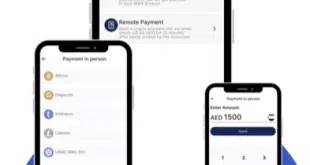It has been fashionable in the payments industry to dismiss cryptocurrencies as exotic flora and fauna that can’t begin to compete with the sturdiness of, shall we say, real money. And indeed, the oldest crypto coins have been in operation now for more than a decade with little to show for themselves as a medium of exchange.
Consumers not versed in the arcana of crypto wallets avoid digital currencies as matter of course, while merchants fear the wild swings in value that some of them have displayed, particularly the number-one currency, Bitcoin, and so they shun them. Instead, when a customer opens his mobile wallet online or at a store and spends his crypto, a processor like BitPay or PayPal stands in and converts the proceeds immediately to fiat.
Critics complain this operation can’t be credited as actual “acceptance” by the merchant of the customer’s crypto. This is true enough, but the option does at least provide a wide expansion of opportunity for the user to spend holdings that would otherwise sit in that wallet as nothing more than investment assets.
So what will prompt merchants, en masse, to begin taking crypto as crypto? As our cover story this month points out, there are some developments in this regard that may hold promise. Visa is building a platform that will link to crypto exchanges and banks to enable the exchanges to settle stablecoins directly with Visa. The network is testing the concept with Crypto.com, an exchange, and Anchorage Hold LLC, a settlement bank. Crypto.com is just the start. Visa is looking to add more crypto wallets (that is, issuers) to this venture later in the year.
Rival Mastercard is also building a platform to handle cryptocurrency in an effort that shares Visa’s aim to make acceptance easier and more widespread. As our story points out, the ultimate aim is for the network to move a crypto transaction as it would an ordinary card transaction.
One other promising development is the onset of so-called stablecoins, or cryptocurrencies whose value is linked to that of a national fiat currency, such as the dollar. These are the currencies both the Visa and Mastercard projects envision working with. They heighten the chances of merchant acceptance because, by definition, their values don’t swing up or down in a matter of hours or days. This means merchants aren’t forced to hedge against the potential that the money they’ve accepted will end up with a value well below the price of the goods the money bought.
In any case, if crypto is ever going to evolve from asset to actual currency, these or efforts like them will have to succeed.
—John Stewart, Editor, john@digitaltransactions.net




